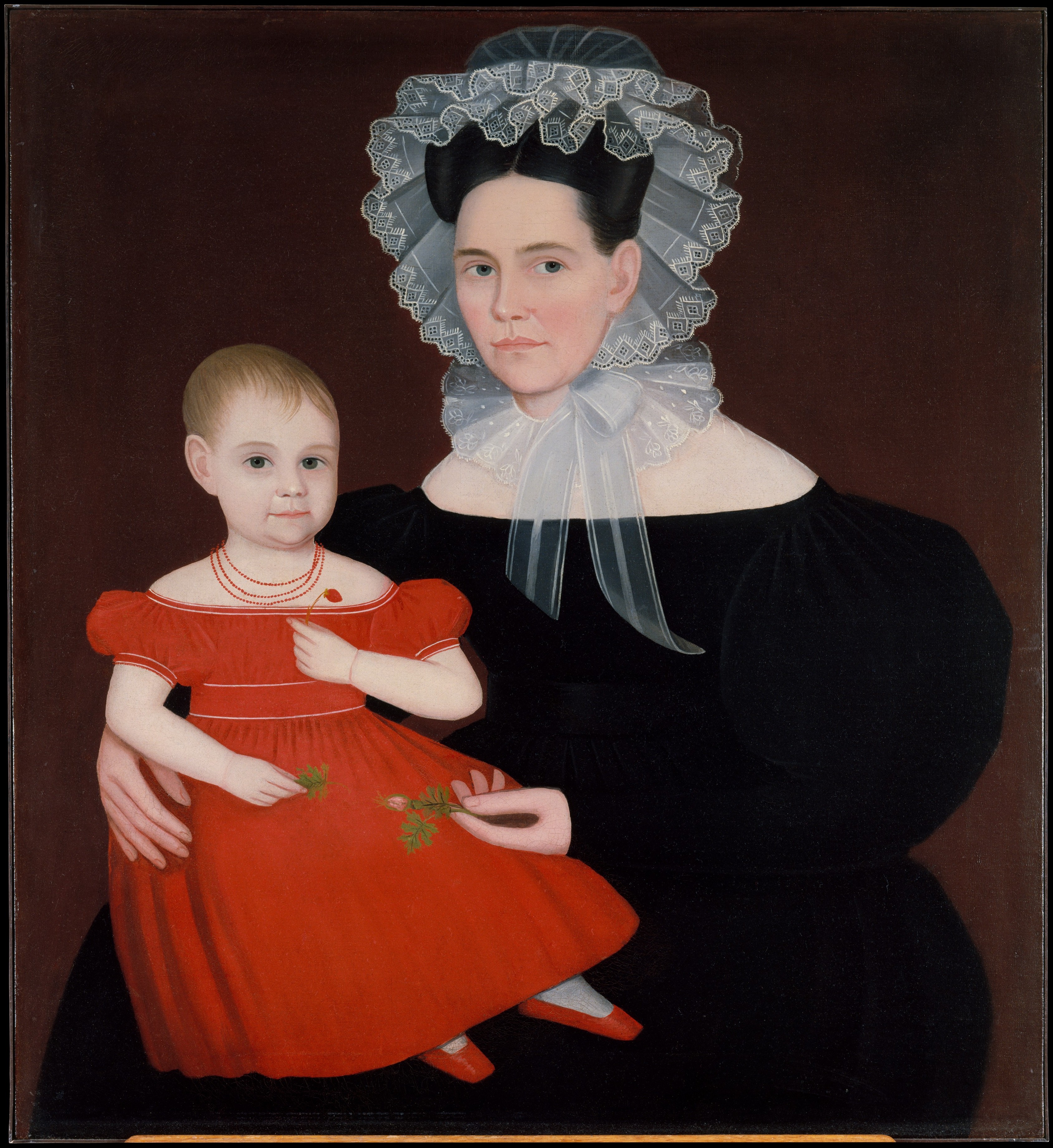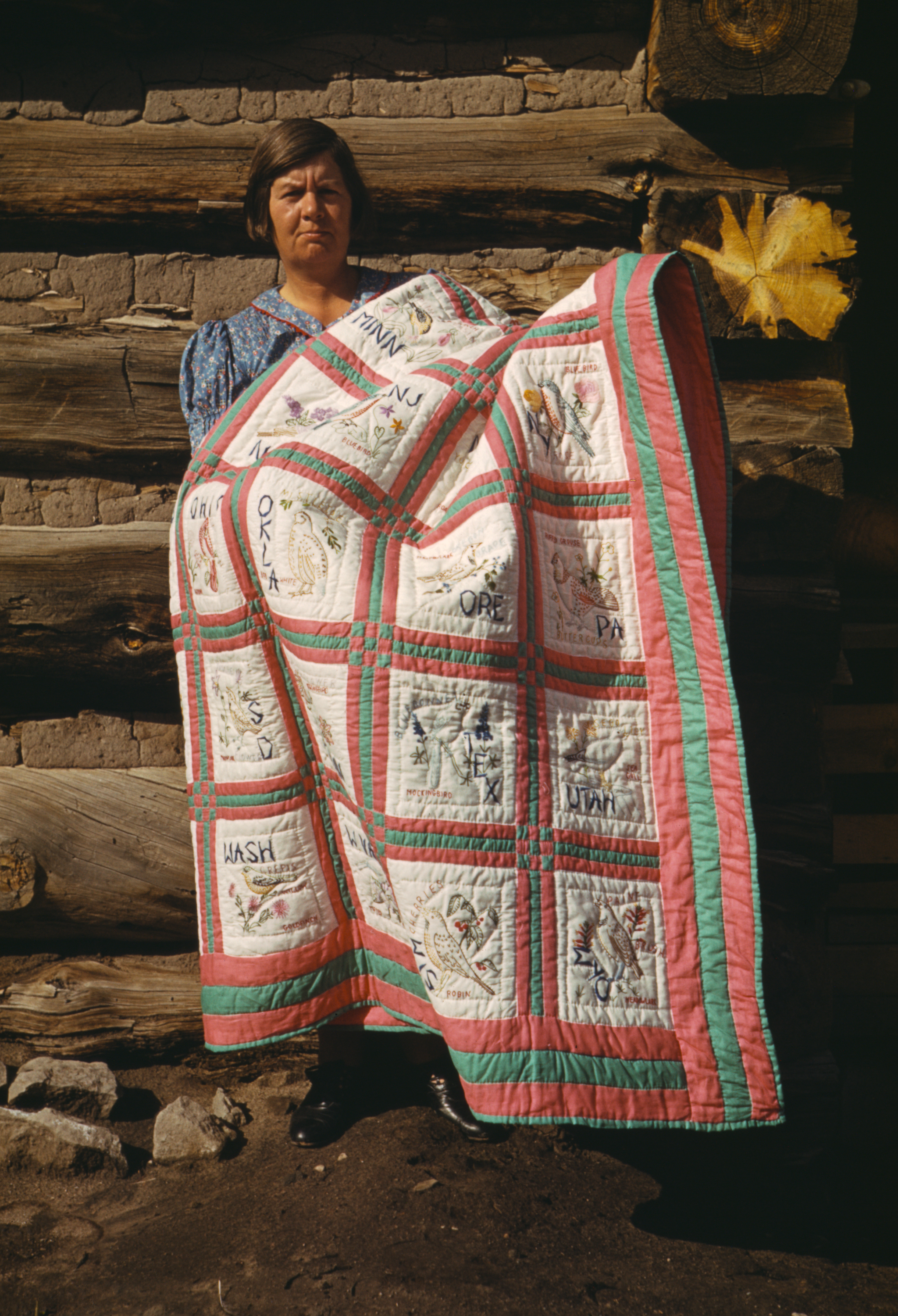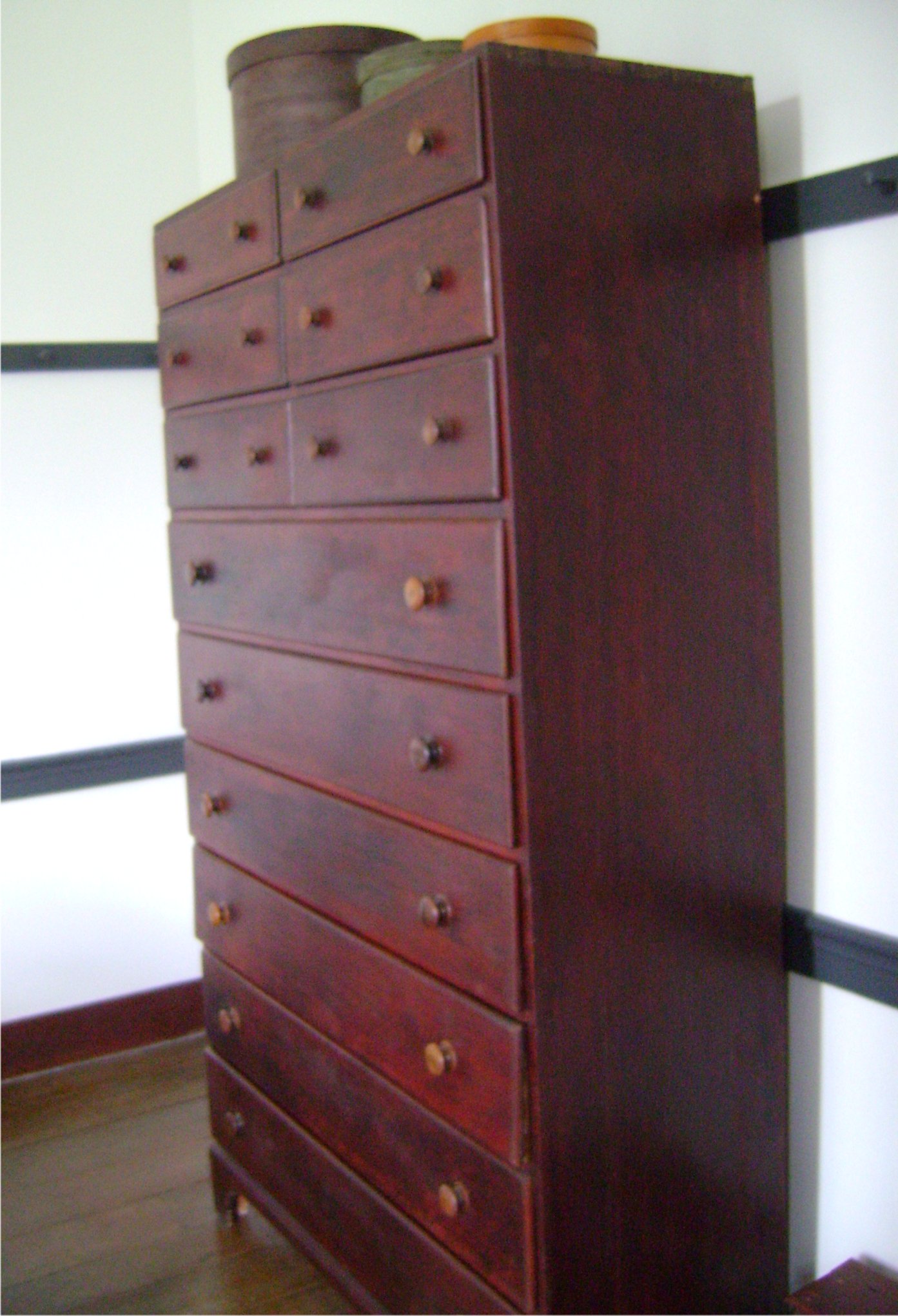|
American Museum And Gardens
The American Museum and Gardens (formerly American Museum in Britain) is a museum of American art and culture based at Claverton, near Bath, England. Its world-renowned collections of American furniture, quilts and folk art are displayed in a Grade I listed 19th-century house, surrounded by gardens overlooking the valley of the River Avon. Claverton Manor The country house was designed for John Vivian, a barrister who had purchased the manor in 1816, by Jeffry Wyatville in 1819–20. It stands on the steep west slope of the Avon valley, above the Claverton village, and is about east of the centre of Bath. The house has three storeys and is built in ashlar. Its east elevation, overlooking the river valley, has full-height bows flanking three central bays with a projecting square porch, above it two Ionic columns in antis. The south elevation has five bays, the central three embellished with Ionic pilasters under a pediment bearing the Vivian arms. A tall screen wall to t ... [...More Info...] [...Related Items...] OR: [Wikipedia] [Google] [Baidu] |
Claverton, Somerset
Claverton is a small village and civil parish about east of Bath at the southern end of the Cotswolds Area of Outstanding Natural Beauty, in Somerset, England. The parish has a population of 115. History The parish was part of the hundred of Hampton. Claverton Pumping Station was designed in 1810–13 by John Rennie to lift water from the River Avon to the Kennet and Avon Canal, using power from the flow of the river. Claverton Manor, on the valley slope above the village, is a country house designed by Jeffry Wyatville and completed in 1820. A Grade I listed building in extensive gardens, it has housed the American Museum since 1961. Claverton was recognised as being of special architectural and historic interest and was designated a Conservation Area in November 1981. Governance The parish falls within the unitary authority of Bath and North East Somerset which was created in 1996, as established by the Local Government Act 1992. It provides a single tier of loc ... [...More Info...] [...Related Items...] OR: [Wikipedia] [Google] [Baidu] |
Manor House
A manor house was historically the main residence of the lord of the manor. The house formed the administrative centre of a manor in the European feudal system; within its great hall were held the lord's manorial courts, communal meals with manorial tenants and great banquets. The term is today loosely applied to various country houses, frequently dating from the Late Middle Ages, which formerly housed the landed gentry. Manor houses were sometimes fortified, albeit not as fortified as castles, and were intended more for show than for defencibility. They existed in most European countries where feudalism was present. Function The lord of the manor may have held several properties within a county or, for example in the case of a feudal baron, spread across a kingdom, which he occupied only on occasional visits. Even so, the business of the manor was directed and controlled by regular manorial courts, which appointed manorial officials such as the bailiff, granted ... [...More Info...] [...Related Items...] OR: [Wikipedia] [Google] [Baidu] |
Kennet And Avon Canal
The Kennet and Avon Canal is a waterway in southern England with an overall length of , made up of two lengths of navigable river linked by a canal. The name is used to refer to the entire length of the navigation rather than solely to the central canal section. From Bristol to Bath the waterway follows the natural course of the River Avon before the canal links it to the River Kennet at Newbury, and from there to Reading on the River Thames. In all, the waterway incorporates 105 locks. The two river stretches were made navigable in the early 18th century, and the canal section was constructed between 1794 and 1810. In the late 19th and early 20th centuries, the canal gradually fell into disuse after the opening of the Great Western Railway. In the latter half of the 20th century the canal was restored in stages, largely by volunteers. After decades of dereliction and much restoration work, it was fully reopened in 1990. The Kennet and Avon Canal has been developed as a pop ... [...More Info...] [...Related Items...] OR: [Wikipedia] [Google] [Baidu] |
Carinthia West
Carinthia (german: Kärnten ; sl, Koroška ) is the southernmost Austrian state, in the Eastern Alps, and is noted for its mountains and lakes. The main language is German. Its regional dialects belong to the Southern Bavarian group. Carinthian Slovene dialects, forms of a South Slavic language that predominated in the southeastern part of the region up to the first half of the 20th century, are now spoken by a small minority in the area. Carinthia's main industries are tourism, electronics, engineering, forestry, and agriculture. Name The etymology of the name "Carinthia", similar to Carnia or Carniola, has not been conclusively established. The ''Ravenna Cosmography'' (about AD 700) referred to a Slavic "Carantani" tribe as the eastern neighbours of the Bavarians. In his ''History of the Lombards'', the 8th-century chronicler Paul the Deacon mentions "Slavs in Carnuntum, which is erroneously called Carantanum" (''Carnuntum, quod corrupte vocitant Carantanum'' ... [...More Info...] [...Related Items...] OR: [Wikipedia] [Google] [Baidu] |
Kaffe Fassett
Frank Havrah "Kaffe" Fassett, MBE (born December 7, 1937) is an American-born, British-based artist who is best known for his colourful designs in the decorative arts—needlepoint, patchwork, knitting, painting and ceramics. While still a child, Fassett renamed himself after an Egyptian boy character from the book ''Boy of the Pyramid'' by Ruth Fosdick Jones. His name rhymes with 'safe asset'. Early life The second of five children, Fassett was born on December 7, 1937 in San Francisco, California, to parents William and Madeleine, who built the successful Nepenthe in Big Sur, California. He is the great-grandson of the wealthy businessman, lawyer and United States Congressman Jacob Sloat Fassett, and it was his great-great grandparents who founded the Crocker Art Museum in Sacramento, California. He received a scholarship to the School of the Museum of Fine Arts, Boston at the age of 19, but shortly left school to paint in London and moved there to live in 1964. Career In th ... [...More Info...] [...Related Items...] OR: [Wikipedia] [Google] [Baidu] |
Ammi Phillips
Ammi Phillips (April 24, 1788 – July 11, 1865) was a prolific American itinerant portrait painter active from the mid 1810s to the early 1860s in Connecticut, Massachusetts, and New York. His artwork is identified as folk art, primitive art, provincial art, and itinerant art without consensus among scholars, pointing to the enigmatic nature of his work and life. He is attributed to over eight hundred paintings, although only eleven are signed. While his paintings are formulaic in nature, Phillips paintings were under constant construction, evolving as he added or discarded what he found successful, while taking care to add personal details that spoke to the identity of those who hired him. He is most famous for his portraits of children in red, although children only account for ten percent of his entire body of work. The most well known of this series, ''Girl in Red Dress with Cat and Dog'', would be sold for one million dollars, a first for folk art. His paintings hung mostly u ... [...More Info...] [...Related Items...] OR: [Wikipedia] [Google] [Baidu] |
John Brewster, Jr
John is a common English name and surname: * John (given name) * John (surname) John may also refer to: New Testament Works * Gospel of John, a title often shortened to John * First Epistle of John, often shortened to 1 John * Second Epistle of John, often shortened to 2 John * Third Epistle of John, often shortened to 3 John People * John the Baptist (died c. AD 30), regarded as a prophet and the forerunner of Jesus Christ * John the Apostle (lived c. AD 30), one of the twelve apostles of Jesus * John the Evangelist, assigned author of the Fourth Gospel, once identified with the Apostle * John of Patmos, also known as John the Divine or John the Revelator, the author of the Book of Revelation, once identified with the Apostle * John the Presbyter, a figure either identified with or distinguished from the Apostle, the Evangelist and John of Patmos Other people with the given name Religious figures * John, father of Andrew the Apostle and Saint Peter * Pope J ... [...More Info...] [...Related Items...] OR: [Wikipedia] [Google] [Baidu] |
Susan Powers
Susan Powers (born 1954 in Glen Cove, New York) is a self-taught American artist. Education Powers attended the University of Vermont, where she studied classical languages and medieval history, graduating in 1976 with a Bachelor of Arts degree in European Studies. Career Powers began painting in 1979, encouraged by a friend and fellow painter who had seen her expressive pencil drawings. Only a year later, her work had been accepted for display by the prestigious Jay Johnson Folk Heritage Gallery in New York City. In 1980, Powers spent a year in England and France developing her craft, before returning to the U.S. The folk art still lifes of Susan Powers have been compared with the ''trompe-l'œil'' works of the well-known 19th-century American academic artist William Harnett. Like Harnett, Powers is fascinated with common everyday objects — books, seashells, bottles, and teapots — and she renders them in a manner so lifelike they ‘fool the eye’ of the viewer, alm ... [...More Info...] [...Related Items...] OR: [Wikipedia] [Google] [Baidu] |
Quilt
A quilt is a multi-layered textile, traditionally composed of two or more layers of fabric or fiber. Commonly three layers are used with a filler material. These layers traditionally include a woven cloth top, a layer of batting or wadding, and a woven back combined using the techniques of quilting. This is the process of sewing on the face of the fabric, and not just the edges, to combine the three layers together to reinforce the material. Stitching patterns can be a decorative element. A single piece of fabric can be used for the top of a quilt (a "whole-cloth quilt"), but in many cases the top is created from smaller fabric pieces joined, or patchwork. The pattern and color of these pieces creates the design. Quilts may contain valuable historical information about their creators, "visualizing particular segments of history in tangible, textured ways." In the twenty-first century, quilts are frequently displayed as non-utilitarian works of art but historically quilts were ... [...More Info...] [...Related Items...] OR: [Wikipedia] [Google] [Baidu] |
Shaker Furniture
__NOTOC__ Shaker furniture is a distinctive style of furniture developed by the United Society of Believers in Christ's Second Appearing, commonly known as Shakers, a religious sect that had guiding principles of simplicity, utility and honesty. Their beliefs were reflected in the well-made furniture of minimalist designs. History Shaker communities were largely self-sufficient: in their attempt to separate themselves from the outside world and to create a heaven-on-earth, members grew their own food, constructed their own buildings, and manufactured their own tools and household furnishings.—Metropolitan Museum of Art''Shaker furniture''. Metropolitan Museum of Art. Retrieved March 23, 2014. Overview Furniture was made thoughtfully, with functional form and proportion. Rather than using o ...[...More Info...] [...Related Items...] OR: [Wikipedia] [Google] [Baidu] |
Richard Wendorf
Richard Harold Wendorf (born 17 March 1948) is an American art historian, literary critic, and museum and library director. He served as the director of the American Museum and Gardens near Bath, England (formerly the American Museum in Britain) from January 2010 until his retirement in December 2021. Before this, Wendorf was the Stanford Calderwood Director and Librarian of the Boston Athenaeum, the Librarian (director) of Harvard University's Houghton Library, and Professor of English and art history at Northwestern University. His book on Sir Joshua Reynolds won the biennial Annibel Jenkins Biography Prize from the American Society for Eighteenth-Century Studies. He is currently working on a critical study of Philip Stanhope, 4th Earl of Chesterfield. Career Wendorf began his academic career in the English department at Northwestern University: as assistant professor (1976–1981), associate professor (1981–1985), and professor (1985–1989). In 1985 he was also mad ... [...More Info...] [...Related Items...] OR: [Wikipedia] [Google] [Baidu] |
John Judkyn
John is a common English name and surname: * John (given name) * John (surname) John may also refer to: New Testament Works * Gospel of John, a title often shortened to John * First Epistle of John, often shortened to 1 John * Second Epistle of John, often shortened to 2 John * Third Epistle of John, often shortened to 3 John People * John the Baptist (died c. AD 30), regarded as a prophet and the forerunner of Jesus Christ * John the Apostle (lived c. AD 30), one of the twelve apostles of Jesus * John the Evangelist, assigned author of the Fourth Gospel, once identified with the Apostle * John of Patmos, also known as John the Divine or John the Revelator, the author of the Book of Revelation, once identified with the Apostle * John the Presbyter, a figure either identified with or distinguished from the Apostle, the Evangelist and John of Patmos Other people with the given name Religious figures * John, father of Andrew the Apostle and Saint Peter * Pope J ... [...More Info...] [...Related Items...] OR: [Wikipedia] [Google] [Baidu] |


.jpg)



